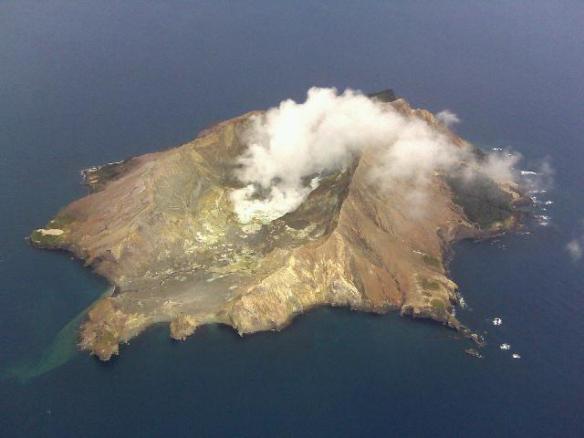Research Philosophy
I believe that the research process is not complete until it has been effectively communicated to the public, other scientists, and to those who may find it useful (e.g. stakeholders, emergency managers).
I am also an avid advocate for publishing in journals that support open access.
Research Interests
I am interested in geochemical tools that are able to convey useful information about volcanic hazards to emergency planners and other stakeholders. My main area of expertise is magmatic volatiles from source to surface in small-scale basaltic systems.
Topics of Interest: Basaltic Volcanism * Monogenetic Volcanism * Volcanic Hazards * Eruption Chronology * Igneous Geochemistry * Magmatic Volatiles * Melt Inclusions and Embayments * Mantle Source Compositions * Magma Ascent Rates * Volcanic Gas Emissions & Fluxes * Volcanic Gas Health Impacts
Techniques & Skills: Scientific Project Management * Fieldwork and Mapping in Volcanic and Geothermal Areas * Rock, Tephra, and Organic Matter Sample Collection for 14C, Ar-Ar Dating, & Other Geochemical Analysis * Melt Inclusion and Embayment Preparation * XRF * XRD * EMPA * LA-ICP-MS * FTIR * Geochemical Modeling * Volatile Element Diffusion Modeling * ArcGIS * Stakeholder, Public, & Media Science Communication
Outcomes from my projects may inform, for example, how we monitor volcanoes and give estimations of eruption warning times, which can be factored into evacuation plans and perhaps even save lives and critical assets. The latter motivates me as a scientist and drives my keen interest in communicating my science to the public, media, and decision-makers such as emergency planners and lifelines representatives.
PhD Research
My PhD is entitled ‘The Volatile Life of Auckland Magmas: Mantle Sources, Magma Ascent Rates, and Gas Emissions.’ I am analysing and using volatiles (gasses) dissolved in melt inclusions, melt embayments, and groundmass glass to:
1. Better characterise the mantle sources feeding the volcanoes of the Auckland Volcanic Field (AVF);
2. Constrain shallow, crustal magma ascent rates in the AVF; and
3. Estimate past and future gas emissions and future fluxes in the AVF.
Background: Melt inclusions and melt embayments are tiny pockets of magma wholly or partially trapped in crystals as they form. Some of these melt-laden crystals are carried to the surface during eruptions. Upon eruption, the magma they contain cools into glass, preserving the gases. These melt pockets are ideal tools for examining the original gas concentrations in the magma, as gasses within the magma escape to the atmosphere upon eruption. By analysing the gas concentrations in the trapped magma, we can learn more about the original melt compositions, the degassing and ascent history of the magma, and how much noxious or deadly gas future eruptions may emit.
The outcomes from this project will be used to improve warning times and better prepare Auckland for gas hazards before future eruptions.
I expect to finish my PhD in 2024.
Past and Ongoing Research Topics (Non-PhD)
- Obtaining ages of AVF volcanoes (through the DEVORA Programme; ongoing)
- Obtaining geochemistry information for all AVF volcanoes (DEVORA; ongoing)
- Estimating baseline soil gas CO2 fluxes, concentrations, and d13C values in urban environments such as the AVF & investigate ways to improve monitoring strategies (DEVORA; ongoing)
- Measuring base surge runout distances and tephra extents in the AVF using ground penetrating radar (GPR) (DEVORA; Past)
- Analysis of olivine populations and Cr-spinel inclusions in Pupuke Volcano lavas, AVF (DEVORA; Past)
- Monitoring changes in surface features in geothermal fields in and near Taupo, New Zealand (Past)
- Monitoring changes in subsurface structures on Whakaari (White Island) Volcano, New Zealand, using GPR, visible and infrared aerial photography, mapping, and soil gas CO2 fluxes (Past)

Aerial image of a steaming Whaakari (White Island) Volcano taken during a research flyover in 2011. Photo by Elaine Smid.
Future Directions
My ultimate goal is to work at a volcano observatory or government research institution that allows me to enhance and expand my existing skillsets in both volcanological research and scientific communication. In particular, I would like to gain more experience in geochemical and diffusion modeling, especially to investigate the influence of magmatic volatiles on the behavior of magmas and lavas, how this information can improve and inform volcanic monitoring and hazard mitigation strategies. Additionally, I would like to further develop my scientific project management leadership and communication with the media and public about volcanoes and volcanic activity.
Jump to:
About Me * My Publications & Presentations * Project Management
